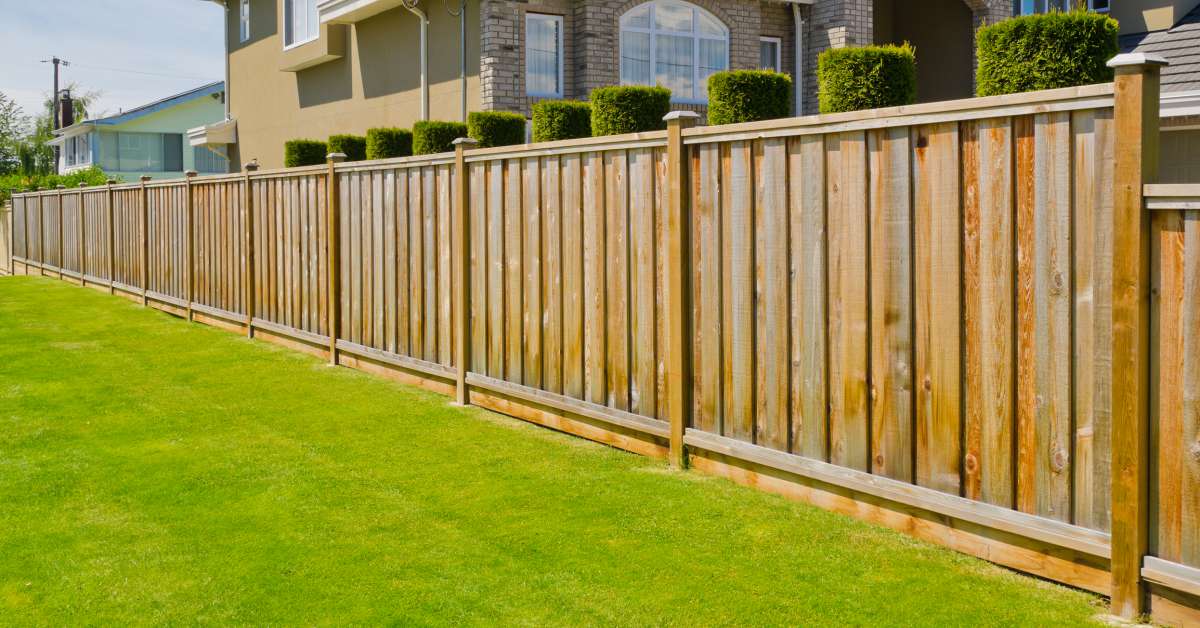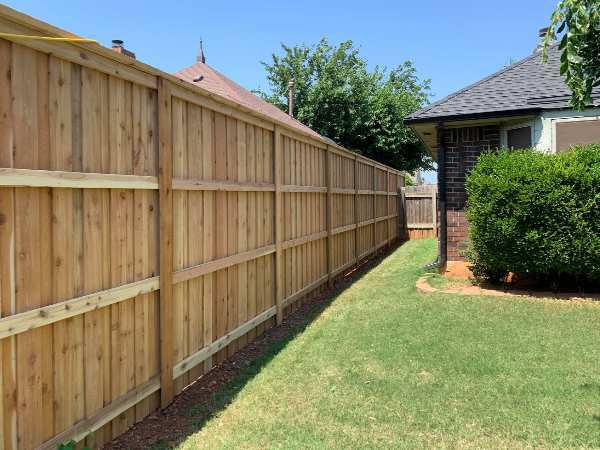
If you’re seeking a fence that strikes a balance between convenience, security, and modern beauty, then Board-on-Board Fences are an excellent and fitting choice for your home. With the prominent benefits it offers compared to other types of fences, Board-on-Board Fences have become increasingly popular and common in recent years. By understanding the benefits of these Fences and exploring the various design options available, you can make an informed decision that enhances the beauty and security of your home for years to come. So let’s dive into this blog to explore Board-on-Board Fences.
What is Board-on-Board Fences?
.jpg)
Board-on-board fences are a type of fencing where vertical boards are installed side by side with small gaps between them. These boards are typically overlapped, with each board alternating on either side of the fence rail. This construction method creates a visually appealing and sturdy barrier that offers both privacy and security. The overlapping design adds an aesthetic touch to the fence while providing additional coverage compared to standard fencing styles. They are popular for their combination of functionality and visual appeal, making them a popular choice for residential properties.
With the diverse designs, materials, and colors available for Board-on-Board Fences, homeowners can choose a fence that complements the architecture of their home, ranging from modern to traditional styles. Whether you’re aiming for a sleek and contemporary look to enhance the curb appeal of your property or prefer a more traditional design that blends seamlessly with the surroundings, these Fences can be customized to suit your vision.
Types of Board-on-Board Fences
Vinyl Board-on-Board Fences
Vinyl Board-on-Board Fences offer homeowners a durable and low-maintenance fencing solution that combines the classic aesthetics of board-on-board construction with the modern benefits of vinyl material. These fences are constructed using vinyl boards that are installed side by side with small gaps between them, creating a visually appealing and sturdy barrier.
These fences offer homeowners long-term durability, resistance to rot and decay, and minimal maintenance requirements. They provide enhanced privacy and security for properties while also offering a variety of colors and styles to suit different architectural preferences. Vinyl Board-on-Board Fences are a popular choice for homeowners seeking a beautiful, functional, and long-lasting fencing solution for their outdoor spaces.
Wooden Board-on-Board Fences
Wooden Board-on-Board Fences are a classic and versatile fencing option that adds rustic charm and timeless appeal to any property. Constructed using wooden boards installed side by side with small gaps between them, these fences create a visually appealing and sturdy barrier. They can be customized with various wood species and stain colors to suit individual preferences and architectural styles. While requiring some maintenance, they offer long-lasting beauty and versatility for homeowners looking to enhance their property’s appearance and security.
While these types of Wooden Fences offer timeless beauty and privacy, they do require some maintenance to keep them looking their best. Regular maintenance tasks, such as staining or sealing the wood, can help protect the fence from the elements and prolong its lifespan. However, with proper care, these Fences can provide many years of enjoyment and functionality.
Wrought Iron Board-on-Board Fence
Wrought Iron Board-on-Board Fences offer a unique blend of elegance and functionality, combining the classic appeal of wrought iron with the privacy and security of board-on-board construction. These fences feature vertical wrought iron bars installed side by side with small gaps between them, creating a visually striking and robust barrier.
The sturdy wrought iron bars provide a solid barrier that effectively deters intruders and enhances privacy. Unlike some other fencing materials, wrought iron is resistant to rust and corrosion, ensuring that the fence maintains its strength and appearance even in harsh weather conditions.
Benefit of Board-on-Board Fences

Privacy
One of the primary advantages of Board-on-Board Fences is their ability to provide privacy. The overlapping design of the boards creates a solid barrier that limits visibility into the yard, allowing homeowners to enjoy their outdoor space without worrying about prying eyes.
Security
In addition to privacy, they also offer enhanced security for properties. The sturdy construction of the fence, along with the overlapping boards, helps to deter trespassers and intruders, providing peace of mind for homeowners and their families.
Aesthetic appeal
Board-on-Board Fences are visually appealing and can enhance the overall look of a property. Whether you prefer a classic and traditional style or a more modern and contemporary design, these Fences can be customized to suit your taste and complement the architectural style of your home.
Drawbacks of Board-on-Board Fences
Cost
Board-on-Board Fences can be more expensive to install compared to other types of fences, particularly if high-quality materials such as cedar or wrought iron are used. Additionally, the labor-intensive nature of the installation process, especially for wood fences, can further increase the overall cost.
Maintenance
Depending on the material used, these Fences may require regular maintenance to keep them looking their best. For example, wood fences may need to be stained or sealed periodically to protect them from the elements and prevent rot or decay.
Conclusion

Overall, Board-on-Board Fences offer a combination of privacy, security, aesthetics, and durability, making them an excellent choice for homeowners looking to enhance the beauty and functionality of their outdoor spaces. Whether you’re looking to create a private retreat in your backyard or add curb appeal to your property, a Board-on-Board Fence can help you achieve your goals.
While Board-on-Board Fences offer numerous benefits, they also have some drawbacks that homeowners should consider before choosing this fencing option. Therefore, homeowners need to consider other factors such as personal preferences, needs, and budget to make informed decisions.




